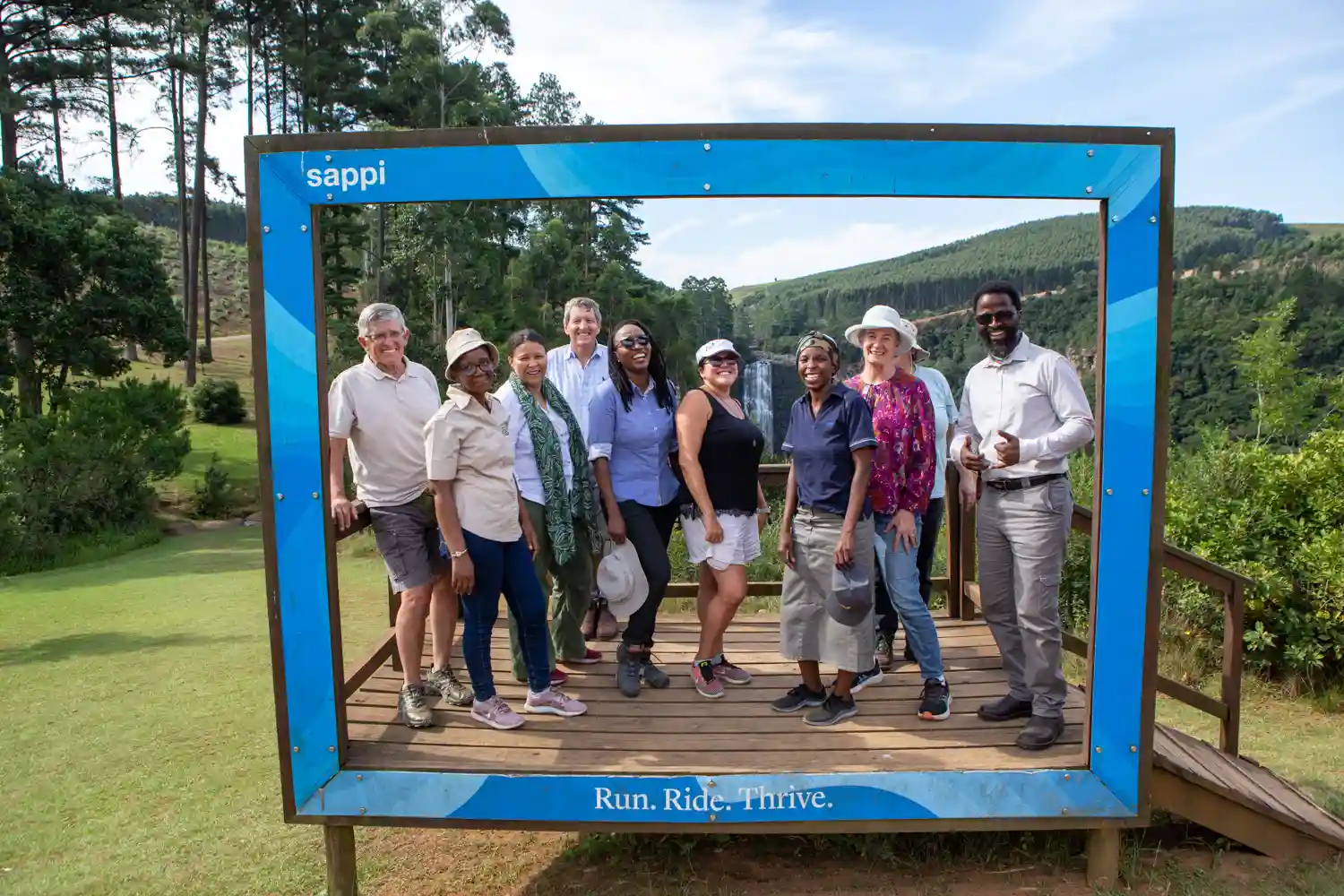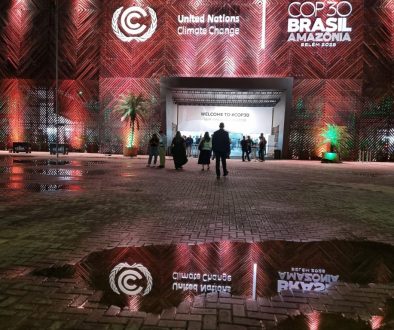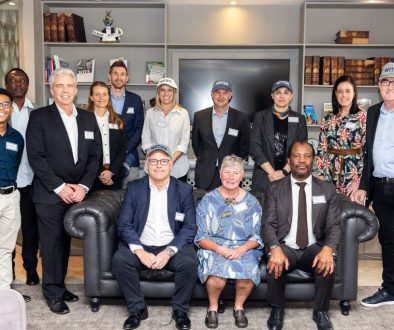A walk on the wide side of forestry
Finding Biodiversity in Timber Plantations
The loss of biodiversity that underpins life on earth, and the ecosystem services upon which we depend, is a massive red flag for every country in the world, South Africa included. As populations increase, more land is transformed from its natural state, and inevitably, the biodiversity supported by those natural systems is negatively affected.
Finding a balance between wood fibre production while conserving biodiversity and minimising environmental impacts is the big challenge facing the forestry industry all over the world. In South Africa, it has a particular significance because almost all timber production comes from planted forests established in the wetter grassland areas located along the escarpment and eastern coastal plains.
“After many years working as an ecologist in forestry I have learnt to regard forestry estates (plantation trees and associated unplanted areas) as ecosystems in their own right,” says Dr Everard, chairperson of the Sustainable African Forest Assurance Scheme. “These ecosystems, under good management, provide a wide range of habitats which is home to South Africa’s rich endowment of biodiversity.”
This was the focus of a recent visit to Sappi’s plantations in the Karkloof in the KZN Midlands by representatives from the Paper Manufacturers Association of South Africa (PAMSA), SA National Biodiversity Institute (SANBI), Department Forestry, Fisheries & Environment (DFFE) and Forestry South Africa (FSA).
Sappi Forests environmental manager Hlengiwe Ndlovu and Dr David Everard provided fascinating insights into the company’s strategy to achieve this elusive balance.
Guests were taken on a fascinating journey from the comfort of the Karkloof Country Club to a natural grassland in the heart of Lebanon plantation at the top of the rugged Karkloof mountains; to the 160-ha Shafton-Kusane wetland surrounded by forestry, dairy and sugar farms; to the magnificent Karkloof Falls where the Karkloof river plunges 105m into a gorge before joining the uMgeni river, a primary water resource for several million people downstream.
Commercial plantations, which occupy some 1% of South Africa’s land area, play a vital role in providing the primary raw material for a wide range of products from paper and packaging to structural timber, veneers, boards, fabric and charcoal, to name but a few. The forestry and forest products industry generates 10.4% of South Africa’s agricultural GDP and 4.5% of manufacturing GDP, creating 105 600 direct jobs and 43 500 indirect jobs in the process.
Crucially, these plantations have made it possible to protect the natural forests in South Africa by providing the wood fibre needs of the growing population. Many of the plantations in this country were established by government in the late 1800s specifically for this purpose.
The stewardship of ecological assets places a heavy responsibility on land managers to proceed cautiously when biodiversity, ecosystem services and the health of the entire natural environment is at stake.
So how does the forestry industry continue to provide the wood fibre raw materials that we need from alien tree plantations that have transformed natural grassland, while at the same time conserving biodiversity?
Dr Dave Everard speaks with Alex Marsh from SANBI. (Credit: Samora Chapman)
Dipping Our Toes Into The Water
The thread that stitched this journey together was the water that trickles out of the springs and seeps at the top of the catchment. It makes its way along countless streams, through wetlands, natural forest patches, plantations, grasslands and farms, gathering momentum before entering the mighty uMgeni River. The water’s journey serves to emphasise the connectedness of the landscape, the fact that how we use the land in one place ultimately affects the health of the land everywhere.
Key to understanding Sappi’s – and indeed much of forestry’s approach – was the patchwork nature of the landscape. From the top of the Karkloof mountain, the visitors could see that the plantations stretching across the valley below were not wall-to-wall trees. There were open grassland corridors between the tree patches, along the rivers and around the wetlands and the steep, rocky outcrops. These open areas constitute around one third of the forestry company’s landholding and are proactively managed for conservation purposes.
The way these unplanted areas are connected to each other, to the wetlands, high conservation value areas and natural forest patches in the landscape, plays a crucial role in their effectiveness as biodiversity enablers. If well planned out and managed, timber estates can therefore become ‘green corridors’ that allow the free movement of plants and animals, thereby supporting biodiversity in the landscape.
Grasslands Galore
The grassland at the top of the mountain was a kaleidoscope of different grasses, forbs and bulbs thanks to the fact that it has been protected from excessive livestock grazing, and periodically burnt to mimic nature and promote biodiversity. Encroaching alien vegetation has been kept at bay.
Directly below the grassland an indigenous forest blankets the steep slopes of the mountain. This forms part of the 3 275 ha Karkloof Nature Reserve which includes 198 ha of Sappi owned land, land leased out by several other private landowners as well as land purchased by Ezemvelo KZN Wildlife. Although the forest was heavily logged back in the day, it has remained undisturbed for half a century and harbours a huge array of birds and animals, plant and tree species including the magnificent yellowwoods and stinkwoods. It lies within the upper catchments of the uMgeni and uThukela rivers.
The group is led through a grassland by Dr Everard and the team. (Credit: Samora Chapman)
Wonderful Wetlands
The Shafton-Kusane wetland is situated in the centre of the Karkloof valley, fulfilling a vital function of capturing, storing, filtering and slowing down the water that drains out of the mountains. It covers an area of 160 ha and was ranked as highest priority in terms of broad regional conservation priorities and opportunities for providing key goods and services. Sappi has pulled its trees back to expand and protect the wetland, and does ongoing invasive alien weed control. Sappi is also upgrading all the stream crossings above the wetland to ensure the water flows freely and unimpeded.
Karkloof Trails
Below the wetland the river enters forest land again, and then plunges over the spectacular Karkloof waterfall. Here we encounter a different side of forestry. This is the focal point of one of the country’s best known trail networks. There are 250 kms of carefully curated single track trails and forestry roads snaking through plantations, grassland corridors and conservation areas, used by mountain bikers, runners and hikers from far and wide who come here to savour what the beautiful KZN midlands has to offer. There is also a well-kept picnic area for day visitors who just want to unwind and enjoy the scenery.
Providing safe public access to these forests and trails is part of Sappi’s social commitment to promote eco-tourism and the local economy.
Amid all this, Sappi needs to operate an efficient and productive forestry operation that sustains jobs and keeps shareholders and stakeholders happy.
The beautiful 105-metre high Karkloof Falls that plunge over the cliff at Shafton Grange. (Credit: Samora Chapman)
Biodiversity Partnerships
Sappi has partnered with organisations such as the SANBI and the World Wildlife Fund, as well as other plantation owners through FSA, to put biodiversity on the forestry agenda. This includes ambitious catchment management projects that extend beyond Sappi’s own borders as well as the stewardship programme that facilitates the proclamation of nature reserves and protected areas on forestry land.
Sappi maintains 160 important conservation areas, including seven nature reserves, on its plantation lands in South Africa.
This work includes on-going water quality assessments and monitoring, integrated weed management plans and maintaining and enhancing soil function, a crucial component of sustainable forest management.
Forestry in South Africa is regarded as a streamflow reduction activity and is regulated and controlled by a raft of legislation. New afforestation is restricted to catchments where spare water is available. The total planted forestry area has diminished over the past decade or so and is unlikely to be expanded in the foreseeable future. Plantations range in size from several thousand-hectare estates all the way down to tiny, one- or two-hectare plots grown by small-scale farmers located in tribal areas.
Siya Kobese, stakeholder relations manager for Sappi, shares insights with the visitors. (Credit: Samora Chapman)
Like any crop, growing trees use water, but they use it efficiently in the production of wood fibre, a key natural resource that is renewable, sequesters carbon from the atmosphere and – unlike a material like plastic – leaves behind zero waste. Commercial forestry plantations in South Africa account for some 3% of total water use, according to an Overview of the SA Water Sector, published by the Department of Water & Sanitation. Plantations are not irrigated – they only intercept rainfall, which reduces runoff into rivers and streams. By way of comparison, agriculture/irrigation utilises 60% of total water resources in South Africa.
Moreover the forest sector uses very little chemical herbicides and pesticides, the use of which are also heavily regulated by certification bodies.
Bird’s Eye View
So how much biodiversity can thrive in this typical patchwork plantation environment?
During 10 birding events held on Sappi plantation land in the KZN midlands between 1997 and 2007, a total of 455 bird species were recorded. A camera trap survey during the same period yielded 30 mammal species. These included jackal, caracal, civet, genet, serval, porcupine, mongoose, aardwolf, badger, otter, samango monkey, baboon, warthog, bushpig, reedbuck, bushbuck and duiker. Several sightings of leopard have also been recorded in plantations around KZN and Mpumalanga.
These sightings indicate that timber plantations – when properly managed – can play an important role in protecting and enhancing biodiversity.
Commenting on the success of the visit, Jane Molony, PAMSA’s executive director, said: “It was great to share what forest owners can conserve in the normal course of business. I personally found the unique aspects of the grassland in the Lebanon plantation absolutely fascinating.”
Wetlands fulfil a vital function of capturing, storing, filtering and slowing down the water that drains out of the mountains. (Credit: Samora Chapman)




